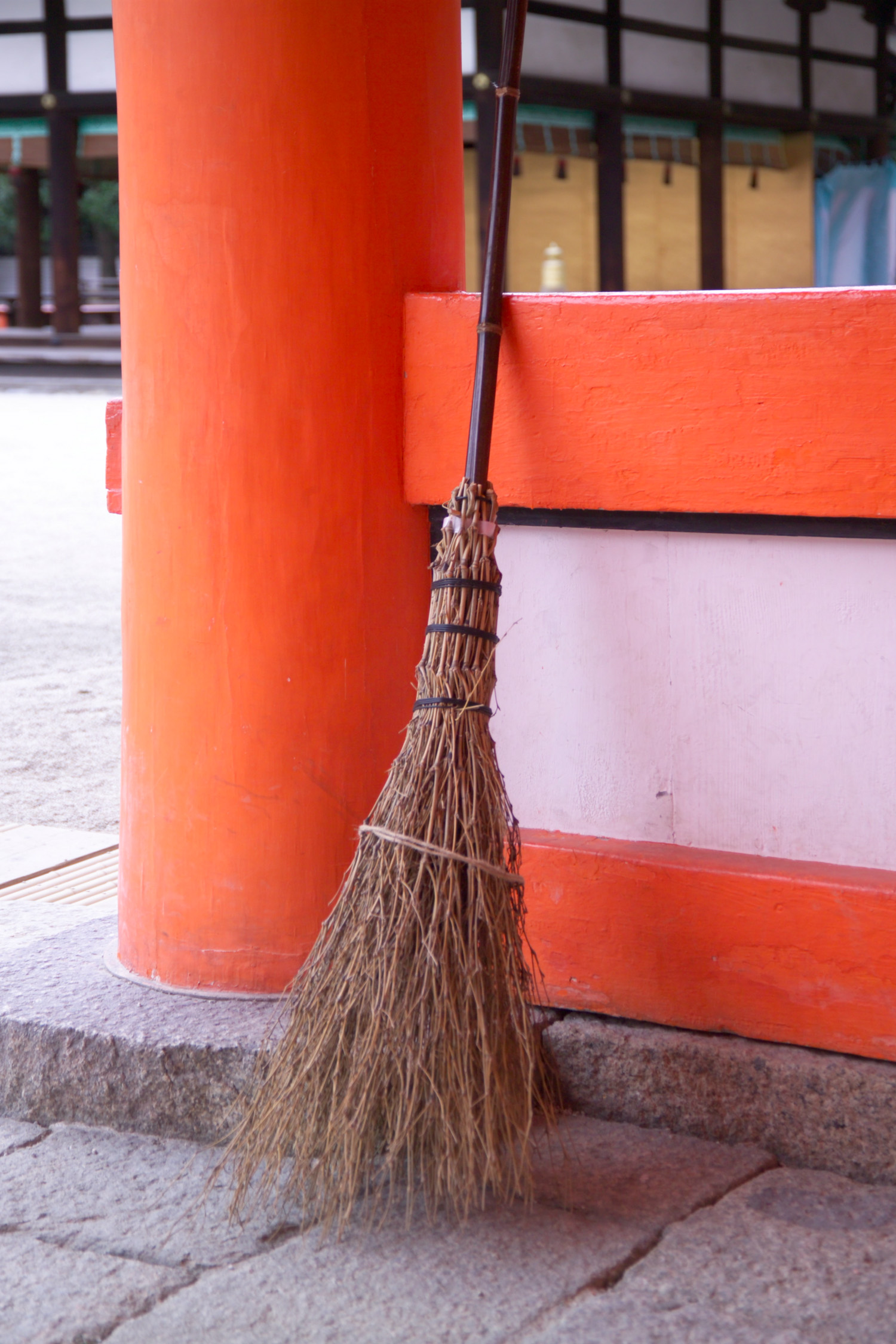The broom, or besom, is probably the tool most associated with witches. The traditional thought was that it was on the broom that the witch flew to Blåkulla (in traditional Swedish folklore Blåkulla was where the witches met the Devil for the sabbats). This believe is believed to come from old rituals associated with nature and agriculture. The women were gathered around the fields with brooms. They red these like hobby horses and the custom said that the higher they leapt, the higher the crops would grow. (How well this suits the Swedish history I cannot say.)
Today the broom still has an important place in Wicca. The broom is used for purifying spaces/rooms/the circle or for protection. At pagan weddings the bridal couple jumps over a broom lying on the ground to mark the beginning och their new life together.
The broom is a symbol of both the God and the Goddess: for the God with its phallic reassemblance and for the Goddess with the three parts from which it is made; shaft, the bristles, and the binding cord. Placed by the door it protects the home from evil spirits and negative energy. To place a broom across a doorway allows your departed family and friends to contact you it they wish so. As long as it remains there they can communicate freely. To protect oneself from nightmares one can place a broom under the bed or under the pillow. A similar way to protect the bed if one is going away for any lenght of time is to put the broom in the bed with the bristle on the pillow. This way it will protect the bed from evil spirits until you return.
With the exception of brooms used only for magical purpose,s moving an old broom into a new house will bring bad luck.
Smaller brooms can be hung as decoration near a door to purify those who enter it.
Picture from: Wikipedia
************************************************************************
Kvasten är nog en av de verktyg som oftast kopplas ihop med häxor. Den traditionella tanken var att det var på den häxan flög till Blåkulla. Denna tro tros komma från gamla ritualer sammanbundna med natur och jordbruk. Kvinnorna samlades då runt fälten med kvastar. De red på dessa likt käpphästar och seden gick ut på att ju högre de hoppade desto högre skulle grödan gro. (Huruvida detta stämmer för Sverige vet jag inte.)
Idag har kvasten fortfarande en viktig plats inom wicca. Kvasten används för att rena platser/rum/cirkeln eller som beskydd. Vid hedniska bröllop hoppar brudparet över en kvast som ligger på marken för att markera början på sitt nya liv tillsammans.
Kvasten är en symbol för både Guden och Gudinnan: för Guden med sin falliska likhet och för Gudinnan med de tre delarna den består av; skaft, borst och snöret den bundits med. Placerad vid dörren skyddar den hemmet mot onda andar och negativ energi. Att placera en kvast tvärs över en dörröppning tillåter bortgångna släktingar och vänner att kontakta dej om de så önskar. Så länge den ligger kvar kan de kommunicera fritt. För att skydda sej mot mardrömmar kan man placera en kvast under sängen eller under kudden. På ett liknande sätt kan man skydda sängen om man ska resa bort en längre period: Placera då kvasten i sängen med borsten på kudden så skyddar den sängen från onda andar medan du är borta.
Med undantag för kvastar som används enbart för magiskt bruk betyder det otur att ta in en gammal kvast i ett nytt hus.
Mindre kvastar kan hängas som dekortation nära dörren för att rena de som kommer in genom den.


Inga kommentarer:
Skicka en kommentar